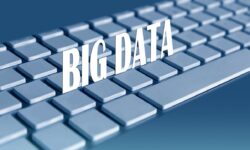Last updated on March 26th, 2025 at 10:47 am
You can find free Wi-Fi at most public places, but that doesn’t mean you should always hop on the free Internet these public hotspots provide. Most public Wi-Fi hotspots have inadequate security or no security at all. Surfing on a free Internet provided by a public hotspot makes your device susceptible to various cybersecurity attacks if you’re not using security measures such as installing a firewall, using a VPN, and having network file sharing turned off.
When your cell phone’s internet connection is down, connecting to a nearby free Wi-Fi hotspot to browse social media networks, read emails, do online shopping, or chat with friends and family members can be tempting. And it is difficult to resist the temptation of using freely available Internet, especially when you can find free Wi-Fi hotspots wherever you are.
However, you should refrain from connecting to public hotspots without checking your device’s security first.
Types of Wi-Fi Hotspots and Their Security
Here are mainly two types of Wi-Fi hotspots you should know about.
1. Public Wi-Fi hotspots
As the name suggests, public hotspots are created by public places. Restaurants, hotels, coffee shops, airports, retail stores, and other public places set up public Wi-Fi hotspots to provide patrons with free internet access.
Though some places like hotels or coffee shops sometimes charge a nominal fee to allow you to use their Wi-Fi spots, public Wi-Fi hotspots are often accessible. Due to more people accessing public Wi-Fi hotspots at a given time, these hotspots are a prime target for hackers.
2. Mobile Hotspots
You can use your smartphone to set up a Wi-Fi hotspot. When you enable this feature, your smartphone uses its cellular data to offer internet access through Wi-Fi. Configuring a Wi-Fi hotspot on an Android device or using your iPhone as a Wi-Fi hotspot is easy. The option to enable Wi-Fi hotspots often lies in the Settings menu on most smartphones.
You can also buy small devices purposely designed to create mobile hotspots. These devices, known as cellular modem hotspots, come with batteries and allow users to access the Internet wherever they want.
As you have more control over your mobile hotspot settings, like creating strong passwords, it offers more security than a public Wi-Fi hotspot.
Why Aren’t Public Hotspots Secure for Accessing Wi-Fi?
There are various reasons why free hotspots are not secure for accessing Wi-Fi. Threat actors can create malicious or rogue hotspots using real brand names (or similar ones). As it is not easy to tell whether a hotspot is legitimate, you may connect to a malicious hotspot thinking you’re connected to a legitimate one. As a result, the hacker who created the malicious hotspot can access whatever you do online, including your login credentials, sensitive data, payment card details, etc.
Also, in a poorly secured Wi-Fi hotspot, a threat actor can intercept data between your device and the websites you visit. What’s worse is that they can install malware on your device. Malware on your device can steal data, damage files, control your device, hijack resources for tasks like mining, or encrypt files for ransom.
Can You Spot Rogue Hotspots?
Threat actors create rogue Wi-Fi hotspots mimicking legitimate brands. For example, a restaurant named The Spice Curry offers free Wi-Fi hotspots to its patrons. The service set identifier (SSID), the name of the Wi-Fi hotspots, is The Spice Curry. A threat actor can create a rogue hotspot with the name The_Spirce_Curry. For an unsuspecting patron, figuring out which network is legitimate is not easy.
Legitimate public Wi-Fi hotspots often require users to submit passwords. So, if a free Wi-Fi hotspot doesn’t require a password to join, there is a red flag. Avoid connecting to such a network to be on the safer side.
The most effective way to avoid connecting to a rogue network is to ask any staff member for the right SSID. Through scanning QR codes, many public places allow users to join free Wi-Fi hotspots.
You cannot be sure that a threat actor does not strategically place the QR code you are looking at. So, it is always better to check with a staff member about the right SSID name for the Wi-Fi hotspot.
So, if you want to work safely from a coffee shop offering a free Wi-Fi hotspot, you should ensure that you connect to a legitimate hotspot, not a rogue one.
Is Your Wi-Fi Hotspot Secure Enough?
Whether connecting to a mobile hotspot or a public hotspot, ensure the Wi-Fi hotspot is secure enough to keep the malicious actors at bay.
If you plan to enable your smartphone’s hotspots or use a cellular modem hotspot, check your password first. If the password to join the mobile hotspot is easy to crack, a threat actor can leverage this vulnerability and sneak into your network.
So, create a complex password to join your portable hotspot to prevent anyone from guessing your Wi-Fi password. Also, keep your devices and antivirus up-to-date so that threat actors cannot exploit any vulnerability in your device to their advantage.
When connecting to a public Wi-Fi hotspot, join the legitimate network by enquiring an employee about the correct SSID. Always connect to a secured Wi-Fi network that requires entering a password.
Now, most social media websites and other popular websites use HTTPS, which means your connection to these websites is encrypted, and hackers won’t know anything about the information exchange happening between you and websites with HTTPS.
So, using public Wi-Fi hotspots to visit HTTPS websites can be reasonably safe. However, you should amp up your device’s security to mitigate threats, for hackers can exploit vulnerabilities in your device to steal information or install malware.
How To Protect Yourself in Public Hotspots
Using public hotspots safely requires a combination of caution and proactive security measures.
Here are some pointers:
- Verify the hotspot’s authenticity to avoid connecting to a malicious or fraudulent hotspot. Look for official signage for free Wi-Fi in public places or ask staff for the correct network name of the hotspot. Always opt for networks that require passwords, which are generally more secure.
- Avoid accessing sensitive information like bank accounts or personal data, as public networks are more susceptible to eavesdropping. Always encrypt your internet traffic using a Virtual Private Network (VPN). Doing so can prevent hackers from intercepting and reading your data.
- To prevent unauthorized access to your files, turn off your device’s firewall and the network file-sharing option. Also, keep your device’s software and antivirus updated to protect against vulnerabilities and common threats.
- To prevent automatic reconnection in the future, always log out of the hotspot you were using and forget the network.
The most effective way to protect your device on a public Wi-Fi hotspot is to avoid connecting to such networks. But if you must access a free Wi-Fi hotspot, ensure your device is adequately protected and you connect to a legitimate network.
Additional Resources:
- How To Manage a Remote Workforce So As To Protect Them From Cyberthreats (Tips and Tools)
- Why Your Business Data Is At Risk And How To Protect It From Hackers



